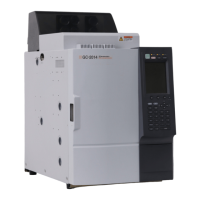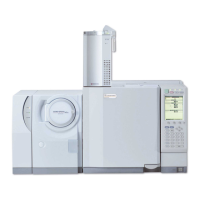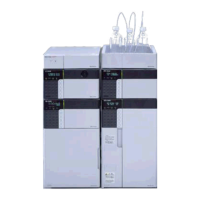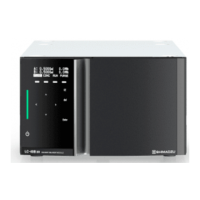63
5 Analysis
5.2
5.
GC-2014
5.2Notes for Analysis
Q Analytical column
・ Make sure that carrier gas is flowing through the column before increasing the column
oven temperature because the column cannot separate compounds properly when its
liquid phase is oxidized. This is especially important for polar columns. Press the
[SYSTEM] key and set a start time so that carrier gas flows for the set time prior to
temperature control of the heated zones.
・ Selection of the analysis column is very important in GC analysis. In general, select a
liquid phase whose polarity and chemical characteristics are similar to those of the
analysis target compound to obtain good peak shape. However, highly polar columns
require low temperatures and do not last long.
Therefore, when analyzing an unknown sample, begin by analyzing it on a neutral column
with a higher allowable temperature limit. Switch to a more polar column if necessary.
Q Sample injection modes(Capillary column analysis)
[Split injection]
In capillary columns, the inner diameter is small and the sample load capacity is low. Unlike
packed columns, only a small (1-2 µL) amount of sample can be injected at onetime. The
split injection mode only allows part of the injected sample to enter the column. This method
is useful for samples of high consentration or about which nothing is known.
Try to perform a split injection method first. Set the split ratio to approximately 1:50. If the
target peak is too large, increase the split ratio. If the target peak is too small or cannot be
detected, decrease the split ratio. Select a proper split ratio in this way.
If the peak is still small with a split ratio set to “1:10” or less, try the splitless injection method.
[Splitless injection]
In the splitless injection method, almost all of the sample amount injected is introduced in the
column by temporarily suspending the split flow.
This method is effective for analyzing a low concentration sample which cannot be easily
analyzed by the split injection method.
To reduce band broadening and sharpen peaks, create a temperature ramp program. The
column initial temperature is set to a temperature lower than the boiling point of the sample
solvent.
[Direct injection]
In the direct injection method, almost the entire amount of injected sample is introduced into
a wide bore column. Because the inner diameter of the wide bore column is 0.53 mm or
more, separation is not as good as that of a column with smaller inner diameter. Because
the peak shape is broad, sensitivity may not be good enough.
For the direct injection method, the WBI (Wide Bore Injection) injection port is required.
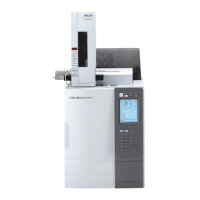
